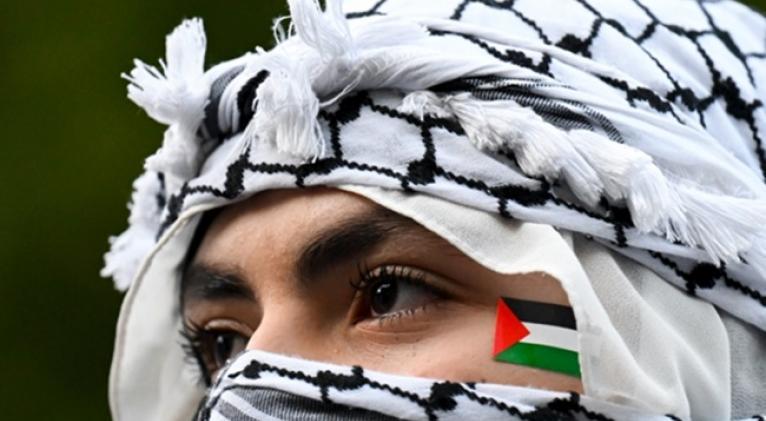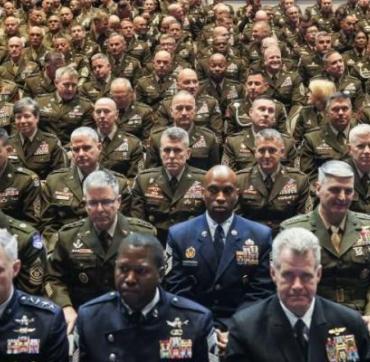The Palestine kufiya: icon tied around the neck and heart
especiales

That centuries-old symbol of the struggle and resistance of the Palestinian people has never been so covered in blood and tears like now, although it continues to wave against the strong winds.
It is a sad reality, but historians, politicians and many personalities from around the world agree that what the people experienced, particularly the Gazans, is only comparable to the Holocaust suffered by the Jews at the hands of German Nazism.
Many of the heartbreaking images that are released daily allow us to see that scarf on the shoulders, wrapped around the neck or covering the heads of those who remain immersed in the worst of hell and also of those who joined the macabre list of over 28,800 dead victims of the Israeli siege of the Gaza Strip since last October 7, being women and children the vast majority of those victims.
A history of culture and resistance
Also known as keffiyeh or hatta in Arabic, the kufiya has been worn for centuries, although it is difficult to pinpoint its exact origin.
Some scholars of the subject maintain that Sumerian priests used it as a symbol of honor and social rank in ancient Mesopotamia more than 5,000 years ago. Others state that its name, kufiya, makes reference to its origin, in Kufa, an Iraqi city where in the 7th century, during a battle between Arabs and Persians, the former secured their turbans with cords of camel hair to identify each other. After victory, they continued to wear it like this, just as the kufiya is also worn nowadays.
As time passed by, the use of this garment spread throughout the Middle East, although in some countries in the region it is known by other names.
In Palestine, before 1930, the kufiya was worn mainly by peasants and Bedouins to protect themselves from sand storms and the strong desert sun.
And since peasants were the first to rise against the British occupation, in 1936, the kufiya accompanied them, then serving to hide their faces and prevent them from being arrested.
However, upon reaching the cities, its use marked them out and it was thus that to prevent it and against the prohibition of wearing it imposed by the British authorities, the command of the Palestinian Revolution indicated that all men in the countryside and the town should wear the kufiya, so that the rebels could not be targeted.
In this way, it spread and became popular to wear it as a symbol of resistance and national identity, which was further consolidated with the Israeli occupation and the fight for liberation from this yoke.
This identity scarf, usually black and white, although it can also combine red and green, accompanied as if it were one's own skin, because it implied feeling less dispossessed, to those almost 800,000 Palestinians who on May 15, 1948 suffered the Nakba (catastrophe in Arabic), forced by Israel to abandon their lands and homes and then becoming refugees, around 500 villages were displaced against their inalienable right.
Above all, it was in the 1960s when the Palestinian kufiya definitively entered history and was never again detached from the struggles of that people, whose leader, Yasser Arafat, was always seen wearing one.
And if Arafat had a decisive influence, so did Leila Khaled, a member of the Popular Front for the Liberation of Palestine (PFLP). Because of her, Palestinian women also embraced that custom that is far from a passing fad and speaks of the resistance and unity of a people.
Palestine’s sole kufiya factory
Hirbawi is the name of the first and for some time again the only factory that produces kufiyas in Palestine.
It is located in Hebron, one of the largest cities in Palestine in the West Bank.
Since 1961, when the factory was founded, local Palestinian artisans have been responsible for keeping this important tradition alive using a variety of local colors and patterns.
Most of the scarves of this type that circulate in the world today are made in other geographies.
Over the past century, the kufiya has become synonymous with the Palestinian quest for freedom and self-determination. Although the founder of Hirbawi, Yasser Hirbawi, passed away in 2018, his three children continue the task with the same determination, passion and commitment their father instilled in them and extends to the entire company and Palestinian supporters worldwide.
Each kufiya takes an hour to be produced because they are handmade using a classic cross-stitch technique perfected over generations.
It is a fabric in two layers, the “base” and the “pattern” or “flower”. The threads between the patterns are cut manually while the looms, which are very old, are in operation.
Much has been speculated about the fabric patterns that distinguish these scarves, and although there is no official confirmation, quite a few claim that, in general, three patterns can be distinguished:
-The mesh or net, the most popular of the three, which they say represents Palestinian fishermen and their link with the Mediterranean Sea
-The pattern of black lines, which are assumed to signify trade routes with Palestine's neighboring partners
-The pattern of olive leaves, linked to the olive trees of the region and the connection of this town with the land, specifically with the production of oil.
After the machines weave the scroll, the individual kufiyas are sewn adding the iconic tassels. “There are only a handful of people left capable of creating a true Palestinian Kufiya,” they say at the factory.
Using locally treated cotton and other fibers, Hirbawi kufiyas are distinguished by keeping their wearer cool even in the sun, protecting them from dust and winds while their fabric absorbs moisture and prevents sweat.
The Hirbawi factory continues to stay operational. In the words of Yasser Hirbawi, its current director, “We will continue. This is the fruit of 50 years of continuous work: it is more than business…”
“Every day, we navigate the harsh and restrictive realities of the occupation to reach our factory. However, once inside, our imagination knows no limits. We channel our creativity into designing Kufiyas that are bursting with color and intricate patterns. It is as if we are compensating for the ugliness of the occupation by producing beauty…”
Kufiyas around the world
Wearing the kufiya has long become an expression of resistance and rebellion against injustices of all kinds and specifically of solidarity with the Palestinian people.
Since the Israeli attacks that began last October and threaten to erase the Gaza Strip, the use of the kufiya has proliferated as an expression of support for the Palestinian cause and repudiation of the genocide that is being taking place.
Important political figures such as Nelson Mandela and Commander in Chief Fidel Castro, historical leader of the Cuban Revolution, were seen in times past wearing the kufiya. Currently, Cuban President Miguel Díaz-Canel has also worn that garment.
Artists and other personalities from the world of art and culture have also appeared in public with the emblematic scarf, which in recent times has multiplied with resounding relevance, accompanying many in the world who cry for peace and justice for Palestine, while the kufiya also waves its wordless cry, full of symbolism and history.
Translated by Sergio A. Paneque Díaz / CubaSí Translation Staff














Add new comment